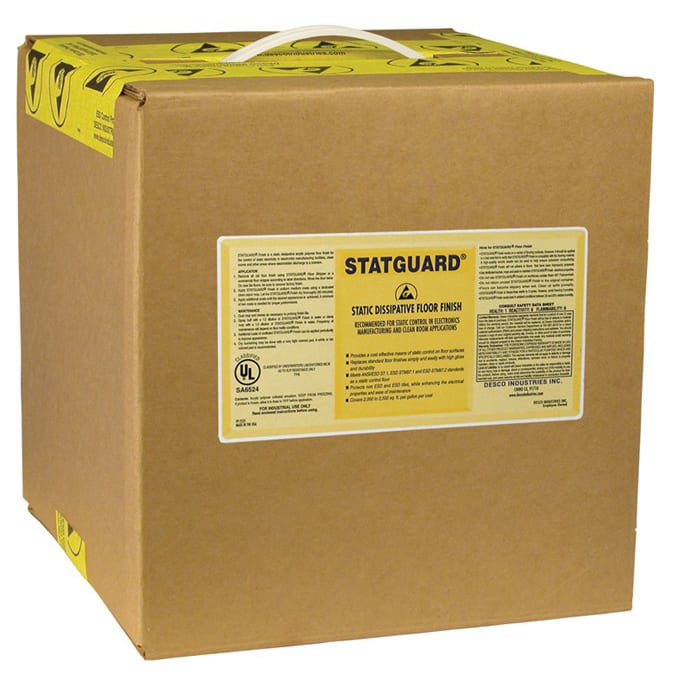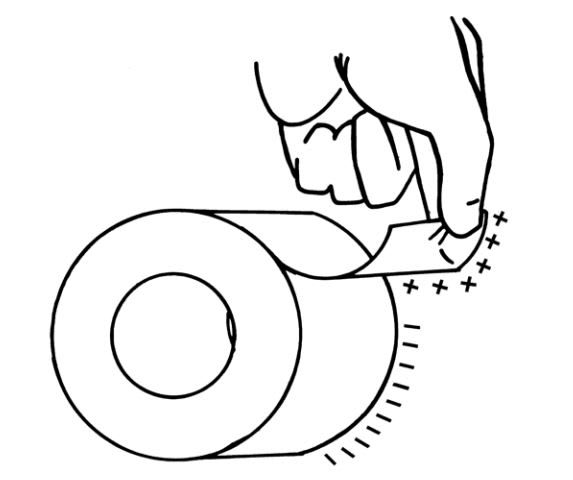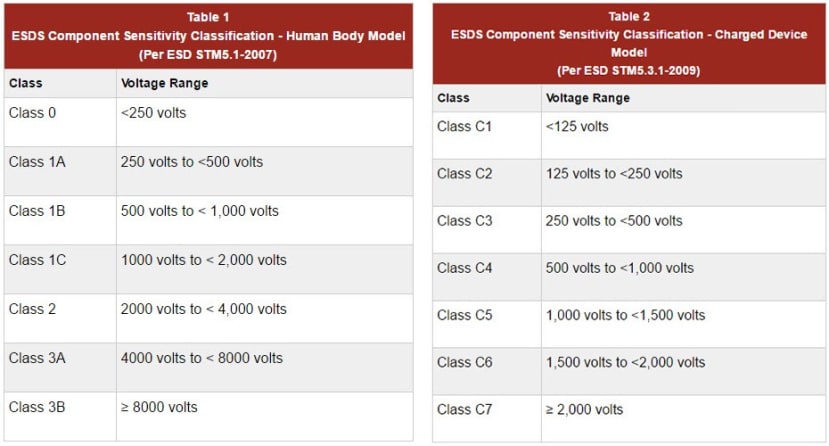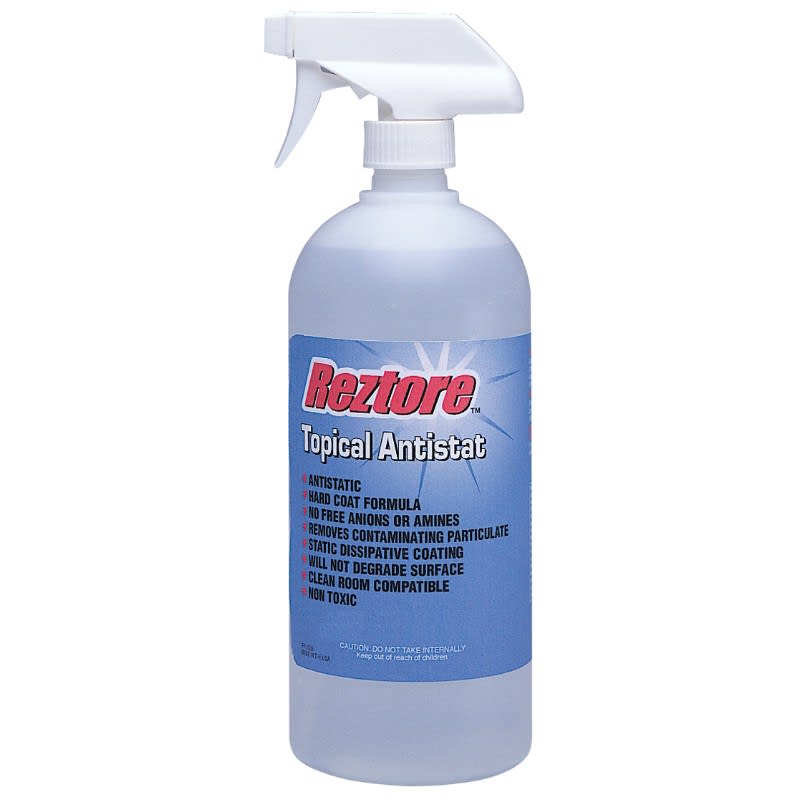How to manage Charge Generation from Flooring
Follow articleHow do you feel about this article? Help us to provide better content for you.
Thank you! Your feedback has been received.
There was a problem submitting your feedback, please try again later.
What do you think of this article?
We’ve previously learned that the simple separation of two surfaces can cause a transfer of electrons resulting in one surface being positively and the other negatively charged. A person walking across a floor and soles contracting & separating from the floor is such an example. The resulting static charges that generate are an annoying and costly occurrence for office and factory employees. The thing is, they can easily be controlled with existing carpets and tiled floors. Learn how in today’s post.
What is Static Electricity?
Static electricity is an electrical charge that is at rest – as opposed to electricity in motion or current electricity. Static charges can be generated by either friction or induction. Typical examples are the Wimshurst machine that uses friction and the Van de Graaff generator using electrostatic induction.
How is Static Electricity generated?
The most common generation of static charge is the triboelectric charge or the friction electricity developed when rubbing together and then separating two masses. For example, when two blocks are rubbed together and then separated, a triboelectric charge is developed on each block. The two blocks will have opposite polarities; one will be negatively charged and the other will be positively charged. Other examples include:
- Unwinding a roll of tape
- Gas or liquid moving through a hose or pipe
- A person walking across a floor and soles contacting & separating from the floor.
Charge Generation: Unwinding a Roll of Tape
Static Charge Generation from flooring
When a person walks across a carpeted or tiled floor, a triboelectric charge builds up in the body due to the friction between the shoes and floor material. The more you generate, the greater the voltage potential developing in the body – you are basically acting as a capacitor.
Everyone's capacitance to hold charges is different. However, a sure sign of static presence is hair standing on end or static discharge sparks. Static discharges can be noticed when you touch an object of lower electrical potential such as a door knob, and a bolt of electricity flows from your charged body to the door knob. This flow of electricity is actually a result of the stored static charge that is being rapidly discharged to the lower potential object.
This discharge that can be felt as well as seen, is commonly referred to as an electrostatic discharge, or "ESD".

Generating Charges by walking across carpet
It is not necessarily the static charge generated in the body that does the damage as much as it is the difference in potential that creates an electrostatic discharge. The ESD event can be felt at the human sensation threshold of 3000 volts. If one feels or sees the static shock, it is a minimum of 3000 volts. The potential static charge that can develop from walking on tiled floors is greater than 15,000 volts, while carpeted floors can generate in excess of 30,000 volts.
The problem with ESD
The generation of a static charge can pose quite a problem for environments that contain sensitive equipment or components that are vulnerable to static damage, such as electronic manufacturing, repair facilities or medical facilities including computer rooms and clean rooms.
Controlling the damage and costs caused by ESD is usually the main concern that drives a company to implement a static control programme. The costs involved with static damage not only include the immediate cost of the damaged component but the contributing cost of diagnostic and repair labour that is needed to replace or fix the component. In most cases, the labour involved will far exceed the component cost. If the damaged component performs enough to pass Quality Control (QC), it is called a soft failure as opposed to a hard failure when it does not pass the QC. It is far more expensive for a soft failure occurring at the manufacturer which then leads to a hard failure in the field which escalates product returns and field service cost.
The Solution
As with any type of control, there are several levels of protection. The method for choosing the necessary degree of ESD protection starts with defining your static sensitivity for electronic components. The ESD Association defines different classes of sensitivity for the HBM (Human Body model) and CDM (Charged Device Model).
ESDS Component Sensitivity Classification
How can you determine the class of sensitivity of the devices within your facility? Look at your product flow through your facility, start at receiving and walk the components or products through until they are at dispatch ready to ship. Chances are, you have several different product flows through your facility. Each flow or loop will have specific components that enter or travel the loop. Make a list of all the sensitive components in each loop and determine the static voltage sensitivity or rating from each of the manufacturers. The lowest voltage sensitivity will dictate the sensitivity class of each loop. The philosophy here is "the chain is only as strong as the weakest link". Each loop should have the required ESD protection for the most sensitive components that will travel this loop. This will define what class of protection is needed for each loop. You can have different class loops as long as the loops are closed, not allowing other components in. The objective here is to define a static control programme to safeguard your most sensitive component.
Flooring Materials
ESD control carpet and conventional carpet with antistatic treatments can still generate up to 1,500 volts, far exceeding the class 1 limits for the HBM. These carpets, however, when properly maintained, can provide safe grounding and electrostatic propensity below the class 2 and 3 sensitivity range.
Proper maintenance for ESD control carpets is rather simple but very important. For conventional carpets that are treated with a topical antistat or other treatment, it is required that the treatment is replenished on the carpet as it wears away due to foot traffic. The amount of treatment on the carpet can be determined by testing with a surface resistance meter. The higher the resistance readings of the floor, the lower the amount of static control treatment that is present on the carpet. The level of treatment should be monitored by resistance readings and kept between 1 x 106 and 1 x 1010 ohms. Some ESD floor finishes can be used as a carpet treatment. This requires a simple spray bottle filled with 50/50 mix of ESD control floor finishes and water. Always check with the floor finish manufacturer before use. Application of diluted floor finish usually requires a 1 to 2 spray coat on the carpet depending on the level of resistance you want.
Reztore® Topical Antistat
ESD control carpets are made with static dissipative yarn and only require that the yarn is kept clean and free of insulative dirt, dust and spray cleaners.
ESD control floor tiles can also generate triboelectric charges depending on the construction of the tile. The tile (dissipative or conductive) may have voids between the impregnated conductive sections which allows triboelectric charges to be generated and then drained. This cyclic voltage can be very harmful to sensitive components.
ESD control floor finishes alone can provide both non-triboelectric charging as well as a path to ground. Such floor finishes can be applied on many surfaces including sealed concrete, vinyl tile and especially ESD control tiles. If the ESD control tile is generating triboelectric charges, ESD control floor finish will complement these tiles with its non-triboelectric properties, as well as enhancing the surface's electrical properties. The ease of maintenance for an ESD control floor finish is another benefit when used on top of any tile floor, especially carbon impregnated conductive tile that may form streaks of black carbon on the surface.

Conclusion
The best static controls are not only the ones that protect sensitive components and equipment but are: A) at hand and readily available, B) easily maintained. For these reasons, carpets and tile floors should not be overlooked as sources for static control. Existing carpet or tile floors can be easily included into an ESD control programme.




